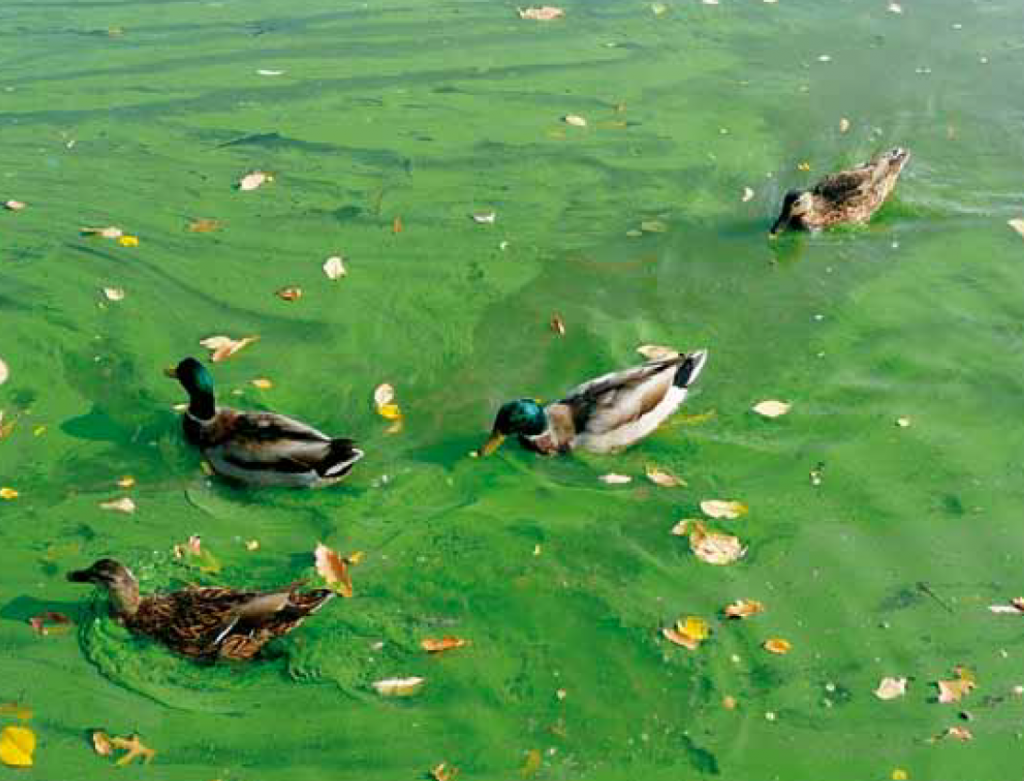> Planet
Eutrophication
Environmental impact of excess phoshorus at local level creates eutrophication. Where fertilisers and nutrient-rich manures are applied, too high quantities of phosphorus and nitrogen in fresh water and coastal systems can result in hypoxia (lack of oxygen) and harmful algal blooms. Eutrophication may cause irreparable damage to freshwater ecosystems, which have the fastest rate of biodiversity decline of all ecosystem types. It degrades habitat and drinking water quality, depleting fish and other aquatic foods. Shortage in supply of fish and sea foods in turn will restrict the access of people to a protein based diet.
Environmental impact of excess phosphorus at global level exceeds planet boundary. In 2009, the Sweden’s Stockholm Resilience Centre selected nine key processes, influenced by humanity, which threaten the stability of the entire Earth System : climate change, biodiversity integrity (functional and genetic), ocean acidification, depletion of the ozone layer, atmospheric aerosol pollution, biogeochemical flows of nitrogen and phosphorus, freshwater use, land-system change, and release of novel chemicals (including heavy metals, radioactive materials, plastics, and more). It is a more simplified model than international Life Cycle Analysis (https://animine.eu/planet-12/). Nitrogen and phosphorus are the two most critical nutrients. The attention being driven by limitation of nitrates, there is a risk for phosphorus to be “hidden under the carpet”. The concept of legacy phosphorus refers to the accumulation of P stored in the soils.
The global status of the planetary boundaries


